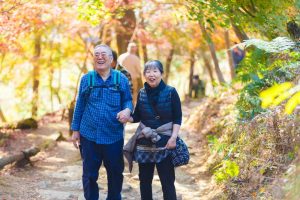It’s the end of November, and almost the end of Canada’s Seniors’ Fall Prevention Awareness Month 2019. Can you tell the difference between a seniors’ fall prevention myth and fact? Learn the truth about the most common seniors’ fall prevention myths.
Myth: Falls just happen when you get older, and there’s nothing you can do about it.
Fact: It’s true that falls are common among seniors. One in three British Columbians over the age of 65 fall each year. Most falls result in minor injuries, such as bruises, but about 10% to 15% percent result in serious injuries, such as broken bones. It’s important to remember that falls are not a normal part of getting older; falls are preventable and anyone can reduce their risk of falls significantly.
Myth: Most falls happen outside, because of hazards like uneven sidewalks, or icy steps.
Fact: It’s true that falls do happen outside – uneven sidewalks and icy steps can be treacherous! However, most falls happen inside the home, not outside. Further, injuries from falls occur not because we tripped over something – that happens at any stage of life, especially with Canadian winters, pets underfoot, or kids leaving toys around – but because seniors often lack the leg strength to stop falling after they are tripped by something.
Myth: Reducing your fall risk takes a lot of time and money.
Fact: It’s true that Canadian seniors who live in lower income neighbourhoods have a higher risk of being hospitalized for an injury from a fall than Canadian seniors who live in more wealthy areas. But there are simple steps anyone can take to reduce their fall risk that are free or cost very little!
- Exercise: The best way for anyone to reduce their risk of falling is to increase their strength and balance through exercise. Anyone can call HealthLinkBC at 8-1-1 to talk to an exercise professional for free. They can walk you through a physical activity readiness questionnaire and provide advice on classes in the community, many of which are offered at low cost. For no cost exercises, there are online videos on our website that seniors can use to follow along at home. Anyone, no matter how frail, can increase their strength and balance.
- Vision Assessments: MSP covers routine eye examinations for those 65 years of age and older. As vision can change quickly as we get older, it’s important to make sure prescriptions are up to date.
- Medication Reviews: Some medications can interact with one another to cause dizziness and seniors may be on a higher dose of medications than they need. You can review your medications with your doctor or a pharmacist in person, or a pharmacist over the phone at HealthLinkBC at 8-1-1.
- Home Hazard Assessment & Modifications: It’s important to remove slip and trip hazards from the home. These can include throw rugs, cords, and piles of clutter. It can also be helpful to install supports, such as grab bars. The Home Adaptations For Independence program provides grants for low income seniors. It is also good to pay attention to footwear; slippers without grips, or open backs, can be a fall hazard.
From all of us at FindingBalanceBC, thank you for your comments, likes, and shares. For more information about how to prevent falls for yourself and/or someone you care about, visit the Resources for Seniors page on our website.
